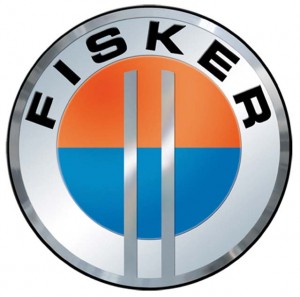
Fisker has confirmed it will purchase GM's Wilmington plant to produce plug-in hybrids code-named Nina.
Fisker Automotive, a California-based start-up, will purchase General Motors’ shuttered Wilmington, Delaware assembly plant and begin producing a new line of “affordable” plug-in hybrids at the facility, starting in 2012, the company confirms.
As TheDetroitBureau.com reported yesterday, word of the purchase had leaked out, with Vice President Joe Biden, a former Delaware Senator, scheduled to attend the formal Tuesday morning announcement.
Fisker is the eponymous creation of Danish designer Henrik Fisker, a former stylist for Ford and best known for his work at the British luxury sports car manufacturer, Aston Martin. His firm plans to begin producing its first plug-in, the $87,900 Karma sports car, next year.
Karma will be produced by the Finnish automotive specialty manufacturer, Valmet, but Fisker will produce the next plug-in on its own, in part as a requirement to get $528.7 million in federal loans drawn from a fund created to encourage the development of high-mileage and alternatively-powered automobiles, the $25 billion Advanced Technology Vehicle Manufacturing program.
Though specific details haven’t been released, the second Fisker product, codenamed Project Nina, is expected to be a “family”-style vehicle, and the company promises to bring it to market for around $48,000. With federal tax credits for purchasers of high-mileage vehicles, Fisker expects the effective price tag to be around $39,900.
The company expects to eventually produce between 75,000 and 100,000 vehicles a year at the Wilmington facility, and “more than half will be exported,” according to a corporate release.
By the time the facility reaches full capacity, it is expected to employ about 2,000, with another 3,000 jobs being created among vendors and suppliers, by 2014, the company claims.
“This is a major step toward establishing America as a leader of advanced vehicle technology,” said CEO Fisker. “Wilmington is perfect for high quality, low volume production and will soon be the proud builder of world-class, fuel-efficient Fisker plug-in hybrids.”
The Delaware factory, also known as Boxwood Road, was abandoned by General Motors during its run through bankruptcy. It was previously used to produce the Saturn Sky and Pontiac Solstice roadsters, but GM has dropped both of those divisions. Fisker is acquiring the assembly plant from Motors Liquidation Co., the firm created to dispose of unwanted GM assets. The factory will go for just $18 million, less than 5% of what a new, ground-up facility would have cost Fisker, but the California firm plans to invest another $175 million, over the next three years, on retooling.
The Wilmington plant was original opened in 1947 to build GM’s first generation of post-War cars. Over the decades, it was steadily expanded and now covers 3.2 million square feet.
Significantly, the Boxwood Road plant will continue to be represented by the United Auto Workers Union.
Whether Fisker can achieve its goals remains highly uncertain. “The success of alternative powertrain technology is heavily dependent upon the price of fuel,” stressed David Cole, director of the Center for Automotive Research, in Ann Arbor, Michigan.
Plug-ins are considered a sort of compromise between today’s hybrid technology, perhaps best known in the form of the Toyota Prius, and pure battery-electric vehicles. The latter carry significantly more batteries and can drive for 100 miles or more, but once the batteries are discharged, they require lengthy recharge cycles.
Like hybrids such as the Prius, a plug-in such as Karma carries twin sources of power, normally a battery-driven electric motor and a gasoline-powered internal combustion engine. The battery side of the driveline can be used during commuting or while running local errands, but for long drives, the IC engine kicks in, eliminating so-called the “range anxiety” associated with pure electric vehicles.
On the positive side, experts predict that when using so-called “smart” chargers during off-peak hours, a battery-based vehicle would need one or two cents of energy per mile, about a tenth of the equivalent gasoline cost, at current prices. But the higher cost of such technology, even with federal and state tax credits, limits the appeal. The higher the cost of gasoline, the more the equation works in favor of plug-ins, battery-electrics and other alternative powertrain technology.

WASHINGTON, Oct. 27 — International Brotherhood of Teamsters General President Jim Hoffa today commended the Obama administration for its efforts to reopen the GM plant in Wilmington, Del. Hoffa also urged the White House and Fisker Automotive to ensure that these are good jobs, with the wages, benefits and retirement security the workers deserve.
“Thousands of workers and their families were devastated when GM closed this facility in August,” Hoffa said. “The decision by Fisker Automotive to retool the plant and build electric vehicles is an important step in rebuilding our economy. By rehiring laid-off workers, the White House and the company are showing a commitment to reinvesting in our national infrastructure. It is important that they do so in a way that is good for workers and good for the community.”
In addition to workers who build the cars, thousands of hardworking men and women who are indirectly involved with production of the plant also lost their jobs, including more than 20 Teamster carhaulers.
“Starting production at this plant is important to every one of us who was affected by the GM closing,” said Stuart Small, a 37-year member of Teamsters Local Union 326 who worked as a carhauler out of the Wilmington plant. “It is difficult to find comparable work in this economy. These are jobs that you can raise a family on and retire. It is important to all of us and to the community that we get back to work and that we are treated fairly.”
The International Brotherhood of Teamsters represents 1.4 million hardworking men and women throughout the United States, Canada and Puerto Rico.
Source: International Brotherhood of Teamsters